Optimization of the Digital Playback Chain for Network Players with NAS Drives
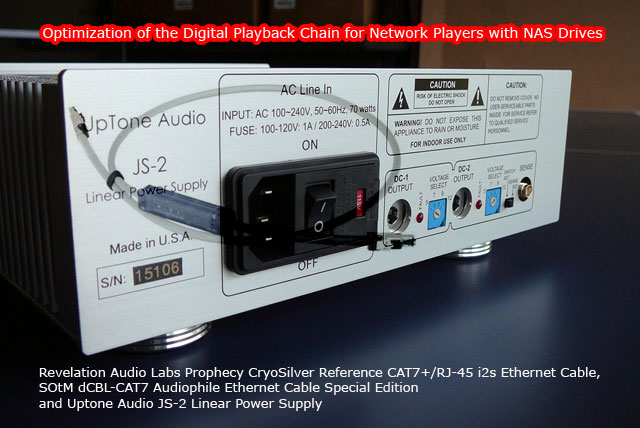
 This review came about as a result of selecting between two digital sources and building my system around the selected digital source chain: the Ayon Audio S-5 Network Player/Preamp, router, and QNAP NAS drive. Originally, the Ayon Audio S-5 Network Player/Preamp was selected based on the versatility (it offers a preamp and many analog and digital input/output options) and the user interface experience (remote, software, etc). At the start of this endeavor, into the Ayon Audio Odin III Build 4 SET amplifier, the combination of the Ayon Audio S-5 Network Player/Preamp, router, and QNAP NAS drive was marginally inferior in terms of total system noise floor as compared to the high dollar single chassis computer based digital source but possessed the warmth, body, and imaging capability you’d expect from a single ended triode digital source. Granted, the digital playback chain that included the Ayon Audio S-5 was more complex and consisted of many components that contributed to the overall system noise floor. My objective was to optimize all digital upstream components in front of the Ayon Audio S-5 Network Player/Preamp by elimination all sources of noise and jitter to achieve a best in class digital front end/preamp.
This review came about as a result of selecting between two digital sources and building my system around the selected digital source chain: the Ayon Audio S-5 Network Player/Preamp, router, and QNAP NAS drive. Originally, the Ayon Audio S-5 Network Player/Preamp was selected based on the versatility (it offers a preamp and many analog and digital input/output options) and the user interface experience (remote, software, etc). At the start of this endeavor, into the Ayon Audio Odin III Build 4 SET amplifier, the combination of the Ayon Audio S-5 Network Player/Preamp, router, and QNAP NAS drive was marginally inferior in terms of total system noise floor as compared to the high dollar single chassis computer based digital source but possessed the warmth, body, and imaging capability you’d expect from a single ended triode digital source. Granted, the digital playback chain that included the Ayon Audio S-5 was more complex and consisted of many components that contributed to the overall system noise floor. My objective was to optimize all digital upstream components in front of the Ayon Audio S-5 Network Player/Preamp by elimination all sources of noise and jitter to achieve a best in class digital front end/preamp.
Although I enjoyed listening to music through the Ayon Audio S-5 Network Player/Preamp, I knew optimization was possible and necessary to achieve a SOTA digital playback system. Previously, the tweaks and system changes included covering the Qnap NAS with ERS cloth while not restricting chassis cooling, installing SR MiG 2.0 footers under the NAS drive, ground connecting all digital components through the SR Grounding Block, elimination of the internet router from the system, installing 10 Synergistic Research ECTs internally within the AA S-5, and placing the NAS drive and stock nonlinear power supply on a Synergistic Research Tranquility UEF Basik. These changes brought the Ayon Audio S-5 Network Player/Preamp and QNAP TS-251NAS drive very close to the Laufer Teknik MP64.
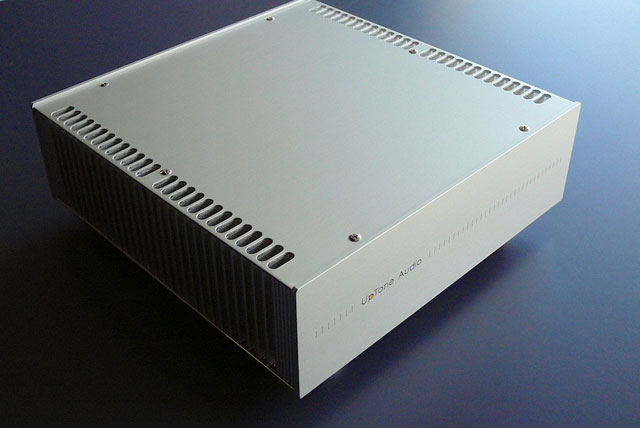
I have always sensed something wasn’t exactly right in my system and started to consider another digital front end and even replacing the Class A SET amplifier with a solid state Class A amplifier. My Ayon Audio Odin SET amplifier has been ruthless in revealing any upstream weakness (I once had the amplifier and network player fuse reversed and my system sounded like it was “screaming” at me). I thought I’d start addressing the weakest link before making any significant component changes which led me to replace the power supply on the NAS drive. My experience with TacT Audio user group and frequent visits to the Computer Audiophile site first lead me down the path to replace the NAS drive stock nonlinear power supply “brick” with the Uptone Audio JS-2 Linear Power Supply. The Uptone Audio JS-2 Linear Power Supply is a dual-output, choke-filtered linear power supply with four user-selectable DC output voltages and is also was one of the few power supplies that could meet the electrical requirements of the Qnap NAS drive. I had my doubts whether it made sense to spend $925 on the JS-2 power supply for a NAS drive and was concerned if it would be an improvement. After installing the JS-2, my initial thoughts were “Wow, finally my system sounds as God intended it”. The noise generated by the stock NAS power supply was obscuring the many benefits of a complete vacuum tube based system. With the Uptone Audio JS-2 linear power supply installed there was a total transformation in terms of naturalness, soundstage, resolution, and transparency … it didn’t make sense to me that changing the power supply on the NAS drive would be that big of an improvement. The Uptone Audio JS-2 power supply is well worth the investment and I’m told based on the production rate of 50 units a month, it’s rarely in stock.
My experience with the Laufer Teknik Memory Player and many conversations with Mark Porzilli (designer of the MP) lead me down the path of replacing the two spinning drives in my QNAP TS-251 with a new QNAP TS-251+8gb NAS drive (4gb more RAM) and single Samsung 2TB solid state drive. Research on the internet and discussions with AudioPhil at Highend-audiopc confirmed that this correct path to pursue. Again, I had my doubts that spending close to $1K on the new NAS drive with internal solid-state drive and would reap any benefits to justify the outlay. But again, I was surprised how the much tighter the bass was, how the music had greater depth with greater clarity, and how the sound staging and imaging was fleshed out as a result of greater stereo separation. The effects of replacing the NAS drive and power supply were completely additive and one might say that one change magnified the other. This supports the belief that one cannot invest enough in the front end of one’s system.
Addressing the Ethernet connection correctly is often overlooked in many digital based server applications. Most streaming occurs with the UDP/IP protocol where bits aren’t error-checked or resent. Although the Ethernet connection between digital components is known to have a robust protocol, there is still the timing of the departure and arrival of packets of data and the jitter/RFI/EMI within the cable itself. My past experience with digital cables has shown that not all digital cables sound alike even though their main function is the transmission of digital data (this has been heavily debated one the internet). The final step in addressing system noise and jitter led to the evaluation of various Ethernet cables. I really didn’t know much about the various Ethernet cables offered in the market place so I started a thread on Computer Audiophile titled, “Best Sounding Ethernet Cable from NAS Drive to Network Player”. As one could imagine, there were many interesting responses posted in that thread. As I weeded through the various suggestions on Ethernet cables, the following candidates emerged:
· Purist Audio Cat7 Ethernet
· Revelation Audio Labs Prophecy CryoSilver Reference CAT7+/RJ-45 i2s Ethernet
· SOtM dCBL-CAT7 Audiophile Ethernet Cable Special Edition
· Synergistic Research Ethernet Active SE (current reference)
· Synergistic Research Galileo UEF Ethernet
· TP-Link Gigabit Ethernet Media Converter x2 and a glass fiber cable, x2 Ethernet
· Wireworld Platinum Starlight Cat8 Ethernet.
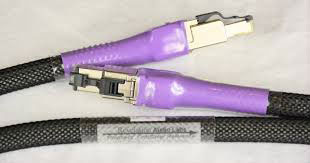 Since I was not able to obtain samples of all Ethernet cables listed above (fellow reviewer, Bill Wells is composing a review on the excellent Wireworld Platinum Starlight Cat8 Ethernet and a running change was being implemented on the Synergistic Research Galileo UEF Ethernet), I narrowed my evaluation down to the Synergistic Research Ethernet Active SE, Reference Audio Lab’s Prophecy CryoSilver Reference CAT7+/RJ-45 i2s Ethernet (photo right), TP-Link Gigabit Ethernet Media Converter x2, 1m glass fiber cable, and x2 standard Ethernet cables at each end, and SOtM dCBL-CAT7 Audiophile Ethernet Cable Special Edition. I tested the TP-Link Gigabit Ethernet Media Converter x2, 1m glass fiber cable, and x2 standard Ethernet cables at each end first since this would be the lowest cost solution and was the most recommended set-up on Computer Audiophile. This set-up was not successful in streaming a music file between the NAS drive and Ayon Audio S-5. In a comparison between my current reference and the RAL Prophecy CryoSilver Reference CAT7+/RJ-45 i2s Ethernet (both having retail prices with $50 of each other), the RAL Ethernet cable bested my reference cable by a wide margin with its lower noise floor, higher resolution, sound staging, bloom, and reduced grain. The unique design characteristics as implemented in the RAL Ethernet cable was clearly resulted in a more musical digital interface and I purchased the review sample. As good as the RAL Ethernet sounded in my all digital system, I preferred the SOtM dCBL-CAT7 AEC SE at little over 2x the retail price which I will discuss in detail below.
Since I was not able to obtain samples of all Ethernet cables listed above (fellow reviewer, Bill Wells is composing a review on the excellent Wireworld Platinum Starlight Cat8 Ethernet and a running change was being implemented on the Synergistic Research Galileo UEF Ethernet), I narrowed my evaluation down to the Synergistic Research Ethernet Active SE, Reference Audio Lab’s Prophecy CryoSilver Reference CAT7+/RJ-45 i2s Ethernet (photo right), TP-Link Gigabit Ethernet Media Converter x2, 1m glass fiber cable, and x2 standard Ethernet cables at each end, and SOtM dCBL-CAT7 Audiophile Ethernet Cable Special Edition. I tested the TP-Link Gigabit Ethernet Media Converter x2, 1m glass fiber cable, and x2 standard Ethernet cables at each end first since this would be the lowest cost solution and was the most recommended set-up on Computer Audiophile. This set-up was not successful in streaming a music file between the NAS drive and Ayon Audio S-5. In a comparison between my current reference and the RAL Prophecy CryoSilver Reference CAT7+/RJ-45 i2s Ethernet (both having retail prices with $50 of each other), the RAL Ethernet cable bested my reference cable by a wide margin with its lower noise floor, higher resolution, sound staging, bloom, and reduced grain. The unique design characteristics as implemented in the RAL Ethernet cable was clearly resulted in a more musical digital interface and I purchased the review sample. As good as the RAL Ethernet sounded in my all digital system, I preferred the SOtM dCBL-CAT7 AEC SE at little over 2x the retail price which I will discuss in detail below.
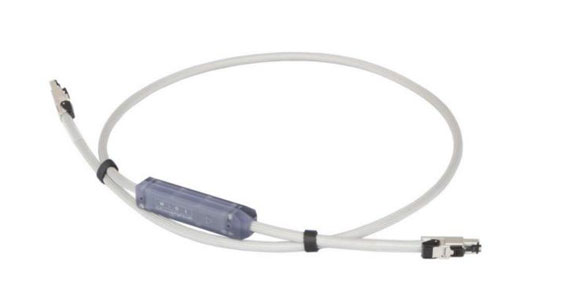
According to the Crux Audio website, US Distributer for SOtM, “The dCBL-CAT7 cable is a specially designed, high-end audio network cable with excellent sound characteristics and provides stable, ultra-high-speed transmission. The Filter Block is added for the elimination of wide band digital noise inflowing from the router or NAS interfering with audio signals to remarkably improve the tonal balance, the one of most important elements in conveying the musical sentiment, and superbly express the dynamic sound characteristics as well as the highly sophisticated and delicate music player’s own nuance”. Who doesn’t like a magic filter? …. The iSO-CAT6 Special Edition combined with dCBL-CAT7 cable is configured with three “flavors” of Ethernet cables offering respectively different sound characteristics: (1) high resolution and dynamics, (2) neutral, (3) mild & comfortable tone”. The three flavors of Ethernet cables included in the SOtM dCBL-CAT7 AEC SE package are distinguished by black, dark grey and light grey color, with a standard length of 50cm. The light grey iSO-CAT6 Special Edition cable that is preceded by the dCBL-CAT7 cable in a typical installation is offered in lengths from 1.5M up to 20M. Over the course of the review, I settled on the dark gray colored “neutral” Ethernet cable. It’s amazing how different each cable is voiced, but as a reviewer I can see the value of offering three cable types given possible future system changes, music taste changes, hearing changes, etc.
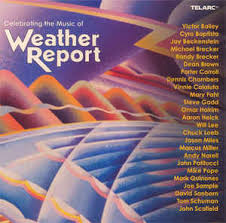 The effect of installing the dCBL-CAT7 AEC SE cable in my system was similar to when I added an external clock to my TacT Audio RCS2.0 DAC/digital preamplifier. There was a profound sense of jitter reduction which made the music sound more liquid, textured, expressive and coherent. You can hear when the timing of bits affects the sound, the soundstage is compressed and there’s a hardness to the music that doesn’t sound natural. The ear–brain perceives jitter as smearing as blurring, veiling of the sonic portrait, flattening of the soundstage, tension in the emotion of the music, harshness, and frequency response unevenness. When listening to complex studio recordings such as those featured on Telarc Artists Celebrating the Music Of Weather Report (cuts 5 and 6) with the dCBL-CAT7 AEC SE installed, I heard more lifelike sounds and less processed music, there was a more believable soundstage, and the sounds of each instrument floated within the soundstage (vividly separate from my AZ Crescendo speakers) with a tremendous sense of space. The dCBL-CAT7 AEC SE clearly demonstrated that jitter and noise transmitted from the NAS drive directly affected my system’s noise floor. Elimination of jitter by the dCBL-CAT7 AEC SE with the incorporated network filters rendered most complex musical passages with ease now.
The effect of installing the dCBL-CAT7 AEC SE cable in my system was similar to when I added an external clock to my TacT Audio RCS2.0 DAC/digital preamplifier. There was a profound sense of jitter reduction which made the music sound more liquid, textured, expressive and coherent. You can hear when the timing of bits affects the sound, the soundstage is compressed and there’s a hardness to the music that doesn’t sound natural. The ear–brain perceives jitter as smearing as blurring, veiling of the sonic portrait, flattening of the soundstage, tension in the emotion of the music, harshness, and frequency response unevenness. When listening to complex studio recordings such as those featured on Telarc Artists Celebrating the Music Of Weather Report (cuts 5 and 6) with the dCBL-CAT7 AEC SE installed, I heard more lifelike sounds and less processed music, there was a more believable soundstage, and the sounds of each instrument floated within the soundstage (vividly separate from my AZ Crescendo speakers) with a tremendous sense of space. The dCBL-CAT7 AEC SE clearly demonstrated that jitter and noise transmitted from the NAS drive directly affected my system’s noise floor. Elimination of jitter by the dCBL-CAT7 AEC SE with the incorporated network filters rendered most complex musical passages with ease now.
There was an intoxicating musicality that allowed me rediscover my classic rock and roll recordings that I’ve avoided as I’ve upgraded my system as of late. Compared to my reference Ethernet cable, there was complete blackness between notes, improved decay, and less haze/grit/grunge when the SOtM dCBL-CAT7 AEC SE was installed. For example, while listening to cut 7 on Lay It Down by Cowboy Junkies, there’s a few parts of that cut where the music stops and only the cymbal is heard. The cymbal now decayed which seem like forever. I have listened to this cut countless times and this never stood out for me until I installed the dCBL-CAT7 AEC SE. When I loaded an old favorite, Damien Rice O, another recording I avoided, I was rewarded with new found liquidity in the midrange and a starting clarity on the various stringed instruments contained on each cut of this album.
The SOtM dCBL-CAT7 AEC SE cable had a knack for distinguishing the contrasting ambience and sonic signature presented on each CD regardless of the type of music genre I played. This strength was clearly demonstrated when switching between a closed miked recordings such as those found on Herbie Hancock River: The Joni Letters versus studio recordings found on Telarc Artists Celebrating the Music Of Weather Report album. No matter which recording I played, the music always had added body and weight yet the tonal character seemed unchanged with the addition of the SOtM dCBL-CAT7 AEC SE. When my highly discerning local audiophile friend heard my updated system, for the first time he actually smiled while the music played, was never critical and just listened to track after track during his most recent visit.
Later, after completing the review, I decided to swap the 50cm dark grey SOtM Ethernet cable that that precedes the first SOtM network filter for the Revelation Audio Labs Prophecy CryoSilver Reference CAT7+/RJ-45 i2s Ethernet cable to see if my system could be further improved. Adding the Revelation Audio Labs Prophecy CryoSilver Reference CAT7+/RJ-45 i2s Ethernet resulted in even a great sense of air and space, images projected well past the rear wall and front baffle of my speakers, and a further refinement in system resolution was achieved. The design, materials, and cable treatment process employed in the Revelation Audio Labs Prophecy CryoSilver Reference CAT7+/RJ-45 i2s Ethernet clearly differentiated itself as a state-of-the-art Ethernet cable in my final system configuration.
Conclusion
Replacement of the stock nonlinear power supply and internal spinning hard drives with a on the Qnap NAS was necessary to bring this part of the front end to the level of the Ayon Audio S-5 Network Player/Preamp. Ethernet cables really do make a difference in digital playback with the combination of the SOtM dCBL-CAT7 ASE and the Revelation Audio Labs Prophecy CryoSilver Reference CAT7+/RJ-45 i2s being an integral part of the down selected playback chain. Based on the final result, the goal to optimize all digital upstream components in front of the Ayon Audio S-5 Network Player/Preamp to achieve a best in class digital front end/preamp was met and exceed. One can spend an enormous amount of money on amplifiers, speakers, and cables but if you don’t get your source right first (address all sources of noise and jitter), you’ll never really hear their full capability or achieve the absolute sound.

Mike Girardi
Revelation Audio Labs Prophecy CryoSilver Reference CAT7+/RJ-45 i2s Ethernet Digital Link Cable,
Price$599
Website www.revelationaudiolabs.com
SOtM dCBL-CAT7 Audiophile Ethernet Cable Special Edition,
Price: $1100
Website: www.cruxaudio.com
Uptone Audio JS-2 linear power supply,
Price $925
Website: www.uptoneaudio.com
Stereo Times Masthead
Publisher/Founder
Clement Perry
Editor
Dave Thomas
Senior Editors
Frank Alles, Mike Girardi, Russell Lichter, Terry London, Moreno Mitchell, Paul Szabady, Bill Wells, Mike Wright, and Stephen Yan,
Current Contributors
David Abramson, Tim Barrall, Dave Allison, Ron Cook, Lewis Dardick, John Hoffman, Dan Secula, Don Shaulis, Greg Simmons, Eric Teh, Greg Voth, Richard Willie, Ed Van Winkle, Rob Dockery, Richard Doran, and Daveed Turek
Site Management Clement Perry
Ad Designer: Martin Perry





Be the first to comment on: Optimization of the Digital Playback Chain for Network Players with NAS Drives